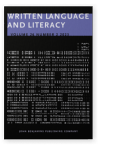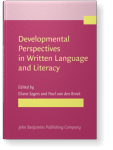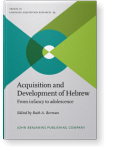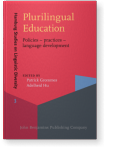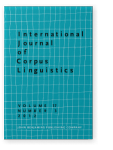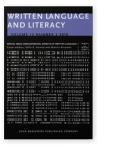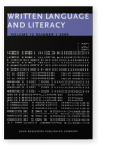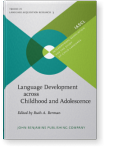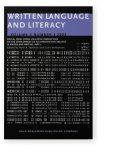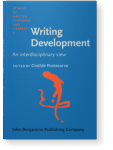Liliana Tolchinsky
List of John Benjamins publications for which Liliana Tolchinsky plays a role.
Journal
2017 Hunting for the links between word-level writing skills and text quality Developmental Perspectives in Written Language and Literacy: In honor of Ludo Verhoeven, Segers, Eliane and Paul van den Broek (eds.), pp. 103–118 | Chapter
A recurring claim in developmental models of written composition is that text quality depends to a large extent on efficient word-level writing skills (handwriting and spelling), at least in the early grades. In this chapter, we show that this assumption has a weak empirical basis because of (1)… read more
2016 Early development of written language in Hebrew Acquisition and Development of Hebrew: From infancy to adolescence, Berman, Ruth A. (ed.), pp. 325–352 | Article
Learning to read and write has a major impact on children’s linguistic and cognitive development. The present chapter traces Hebrew-speaking children’s first steps in gaining access to the special features of Hebrew orthography and then shows how they learn to make use of written language in… read more
2014 Developing a written lexicon in a multilingual environment Plurilingual Education: Policies – practices – language development, Grommes, Patrick and Adelheid Hu (eds.), pp. 245–258 | Article
Children educated in Catalonia are growing in a multilingual environment. Catalan is their school language but not necessarily their home or social language. Our goal was to track the presence of such multilingual input in the written lexicon of 2,436 students throughout compulsory schooling.… read more
2012 Corpus CesCa: Compiling a corpus of written Catalan produced by school children International Journal of Corpus Linguistics 17:3, pp. 428–441 | Article
This paper outlines the compilation of a corpus of Catalan written production. The CesCa corpus presents a picture of the Catalan written language throughout compulsory schooling. It contains two kinds of data: Vocabularies of five semantic fields comprising 242,404 lexical forms and Textual data… read more
2010 The growth of the written lexicon in Catalan: From childhood to adolescence Developmental aspects of written language, Vernon Carter, Sofía A. and Mónica Alvarado (eds.), pp. 206–235 | Article
The lexicon, a complex storage device of units of language use, is a central component of linguistic knowledge closely tied to grammar and has a strong influence on demanding cognitive tasks and academic achievement. This study aims at tracking the growth of the Catalan written lexicon of children… read more
2009 Developing a depersonalized stance through linguistic means in typologically different languages: Written expository discourse Written Language & Literacy 12:1, pp. 1–25 | Article
Attaining rhetorical competence requires the capacity to use linguistic form to communicate discourse stance as well as discourse content. Languages provide their speakers with a range of options to express content in ways that reveal orientation, generality of reference, and attitude to the… read more
2004 Discursive constraints on the lexical realization of arguments in Spanish Language Development across Childhood and Adolescence, Berman, Ruth A. (ed.), pp. 83–109 | Chapter
2004 The nature and scope of later language development Language Development across Childhood and Adolescence, Berman, Ruth A. (ed.), pp. 233–248 | Chapter
2002 Text openings and closings in writing and speech: Autonomy and differentiation Cross-Linguistic Perspectives on the Development of Text-Production Abilities in Speech and Writing. Part 2, Berman, Ruth A. and Ludo Verhoeven (eds.), pp. 219–253 | Article
The differentiation of text segments to fulfil specific discourse functions (e.g. to introduce a topic, or to state the time and place of a story), along with the definition of clear textual boundaries that set the text apart from the situational context, are two aspects of the configuration of a… read more
1997 5. Explicit Word Segmentation and Writing in Hebrew and Spanish Writing Development: An interdisciplinary view, Pontecorvo, Clotilde (ed.), pp. 77–98 | Chapter
